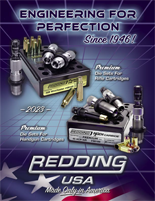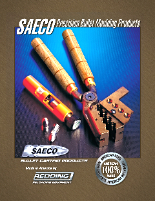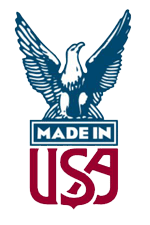Tech Line & Tips (FAQs)
Working With Your Competition Seating Die
The Redding Competition Seating Die is a very specialized instrument. At first glance, you will note that its appearance and construction differs greatly from that of a standard Seating Die. Through examination and use, you will understand and appreciate the amount of engineering that was required to offer you the finest precision Bullet Seating Die on the market.
You’ve undoubtedly noticed that the Competition Seating Die is equipped with a Micrometer. This Micrometer is easily adjustable for bullet seating depth with each increment equaling .001” on the micrometer barrel, or .050” per revolution. This feature enables the handloader to make fast, accurate, and repeatable changes in bullet seating depth, with no guesswork required.
The Micrometer, though very convenient, is just one of the Die’s many innovations. Handloaders concerned with crafting the most concentric ammunition possible should put the Competition Seating Die at the top of their wish list!
Here’s why:
The Internal Sleeve is housed within the threaded Die Body and marked with the Die’s Cartridge Designation. Using the same techniques as a Custom Riflesmith, a one-piece reamer is used to cut a “chamber’ to dimensions that are in accordance with SAAMI and/or CIP Chamber Specifications. This enables the sleeve to hold and align the cartridge case concentrically as it enters the Die. The dimensions of this chamber match the aforementioned specifications very closely. In fact, brass that has been fired in an oversized or otherwise “out of spec” chamber may not fit into the Sleeve.
In much the same manner that the cartridge case is aligned as it enters the Die, the Internal Sleeve has been designed to align the bullet as well. This is accomplished by way of the Bullet Alignment Bore.
Rather than inundating you with all sorts of specifications and tolerances with regard to how well the bullet is held in alignment with centerline of the cartridge case, we would like to walk you through an experiment that will illustrate it.
1) First, disassemble the Die. Removing the Micrometer will allow the Die’s internal parts to be removed from the threaded Die Body.
2) Hold the Internal Sleeve vertically in your hand, oriented so that the Bullet Alignment Bore is facing upwards.
3) Remove the Seating Stem from the Bullet Alignment Bore.
4) Place your thumb over the Chamber end of the Internal Sleeve so that the hole is completely covered, creating an airtight seal.
5) Partially insert the Seating Stem into the Bullet Alignment Bore (1/8” to 3/16”) is sufficient.
6) Using your free hand, gently tap the top of the Seating Stem with your finger. Because the Bullet Alignment Bore and Seating Stem are so closely matched, the air within the Internal Sleeve does not escape; it is compressed. Watch as the Seating Stem “jumps” as the compression reacts upon the Seating Stem.
7) Now, repeat the experiment using a standard jacketed bullet in place of the Seating Stem, you will see the same results. You have just demonstrated that the Seating Stem and the bullet are so closely matched that they will float on a column of air!
As you reassemble the Die, notice that the seating stem moves independently of the Micrometer. This patented design feature assures that the Seating Stem can be held perfectly aligned with the cartridge case, with no error induced by other parts of the Die.
To hold the bullet concentrically, the Bullet Alignment Bore and the Seating Stem have been honed and ground to virtually the same diameter as a jacketed bullet. As a result, the seating stem walls are relatively thin and not as inherently robust as the Seating Plug in a standard Seating Die. Though the Stem is heat treated to make it as strong as possible, it will not endure the excess seating pressure of Compressed Charges. This excess seating pressure will crack the Seating Stem which will, in turn, damage the other internal parts of the Die. Please be mindful because replacement parts are costly and NOT covered under Warranty. Please remember that your Competition Seating Die is a precision instrument and should be used and treated as such. A handloader using this Die to compress powder is tantamount to a machinist using a Micrometer as a C-Clamp.
Because the Cartridge Case and the Bullet are held perfectly in alignment throughout the seating operation, you can be certain that there will be no runout induced by the Seating Die or the Seating Operation. So long as proper handloading techniques are used and brass is sorted for uniformity, the eccentricity of your loaded cartridges will be minimal. If you encounter any trouble, investigate the processes and components used to assemble the cartridges so that you can identify and mitigate any problems.
With proper care and consideration, you will undoubtedly have years of reliable service from your Competition Seating Die. Should you have any questions or require any additional information about our products, please don’t hesitate to contact us, we’d be happy to help you.Specializied VLD bullet seat stems are available
Click here for a reference chart







